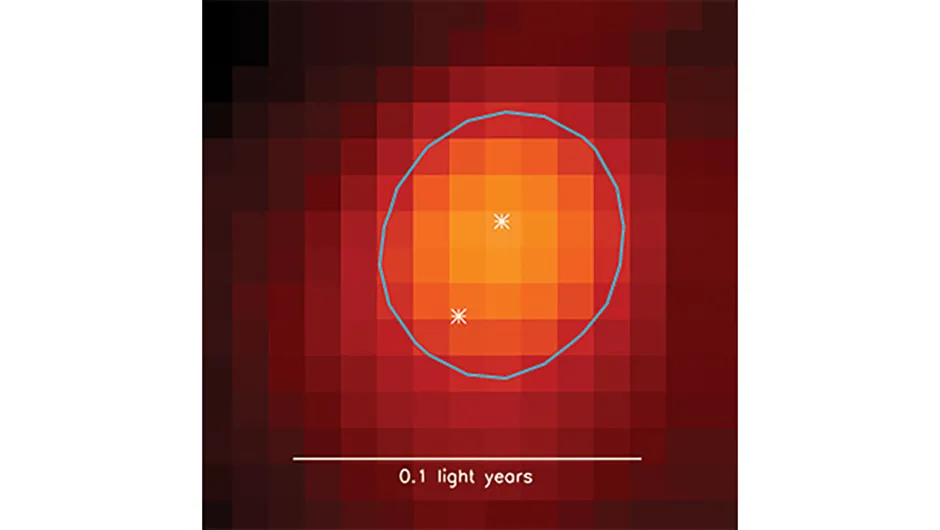A radio image of a triple star system forming in the Perseus molecular cloud. The image was captured by the Atacama Large Millimeter/submillimeter Array (ALMA) in Chile. Image Credit: Bill Saxton, ALMA (ESO/NAOJ/NRAO), NRAO/AUI/NSF
Our Sun may have had a twin partner when it was born 4.5 billion years ago, according to a new study looking at the phenomenon of binary star systems.
Many stars have companions and exist as a binary system, with one star orbiting the other.
But astronomers have yet to conclude whether binary - and even triplet - star systems are born that way, and whether single stars might just be one half of a former solar twosome.
There has even been a search for the theoretical companion star to our own Sun, named Nemesis, which may have deflected an asteroid into Earth’s orbit and contributed to the extinction of the dinosaurs.
A new study suggests that not only our Sun, but potentially all Sun-like stars begin life as part of a pair.
The study team used radio observations of a giant molecular cloud filled with stellar newborns in the Perseus constellation to reach their conclusion.
A mathematical model based on these observations showed that they could only be correct if all Sun-like stars are born with a companion.
“We ran a series of statistical models to see if we could account for the relative populations of young single stars and binaries of all separations in the Perseus molecular cloud, and the only model that could reproduce the data was one in which all stars form initially as wide binaries, says UC Berkeley research astronomer Steven Stahler, co-author of the paper.
“These systems then either shrink or break apart within a million years.”
The use of the term “wide” in this sense means a distance of over 500 astronomical units (AU). 1 AU is the average distance between Earth and the Sun, which is about 150 million kilometres.
This would mean the Sun’s binary partner - if it existed - would have been 17 times farther from the Sun than Neptune is.

It could be the case that the Sun’s stellar partner broke free and escaped into the Milky Way.
“The idea that many stars form with a companion has been suggested before, but the question is: how many?” says paper author Sarah Sadavoy, a NASA Hubble fellow at the Smithsonian Astrophysical Observatory.
“Based on our simple model, we say that nearly all stars form with a companion.
The Perseus cloud is generally considered a typical low-mass star-forming region, but our model needs to be checked in other clouds.”